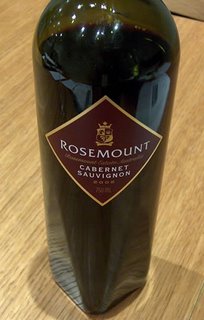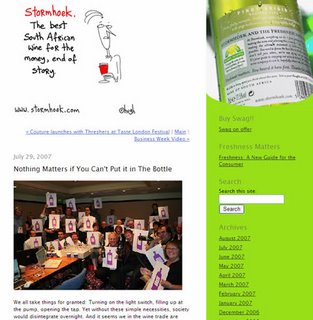
Brands have a life span, or at least this is what marketing dudes tell me. Marketing dudes are usually smarter, better dressed and considerably richer than me, so I should listen to what they say.
Anyway, it goes like this. You build a brand. If it takes off, there is a growth period. You want this to be pretty fast, but you also want it to keep on going. Then there's a plateau period, where a successful, mature brand continues to sell well. The smart dudes reading this will be thinking that this is the phase you want to milk for all it's worth. Stretch it. Because next comes the decline phase. Your brand loses influence and sales. It's suddenly uncool, or boring, or out of touch.
Rosemount was a wine brand that recently, some commentators suggested, had entered the dreaded decline phase. Urgent action was called for to salvage it, and FGL Wine Estates revamped the range, paying attention not just to the liquid, but also the packaging. A simplified, elegant label and a square based bottle are the key design features in question.
What about the liquid itself? Well, the reason I'm blogging on this topic is because I'm drinking the Rosemount Cabernet Sauvignon 2005. And I'm impressed. This is not a geek wine, but I reckon they got the winemaking just right for this sort of brand.
It's deep coloured, with a forward, perfumed nose of sweet red berry and blackcurrant fruit, with a bit of spicy presence. There's a subtle herbiness, too. It is pretty refined. The palate shows sweet ripe blackcurrant fruit, with just enough spicy structure to counter the sweetness of the fruit. Any rough, slightly herbal edges are papered over adequately with the fruit sweetness. I reckon there's also a bit of residual sugar here, which rounds the palate, fleshing it out a bit, and making the wine a lot more accessible (I'd love to know how much - it's notoriously difficult to judge by taste alone because of the way sugar interacts with other components of wine, such as acidity). Look, this isn't the sort of wine that the readers of this blog are going to want to rush out and buy in quantity. But for a commercial style, it's extremely well done. It's tasty; it tastes of Cabernet Sauvignon; it's extremely well made; it avoids the obvious confected or green character a lot of commercial wines in this style display.
So here we have it. A wine I'm impressed by, but which I wouldn't buy. And the brand owners are probably relieved to hear this, because they aren't trying to sell to me.
Labels: Australia, Cabernet Sauvignon, marketing, wine brands


 The web log of wine journalist Jamie Goode. Feel free to nose around; your comments are welcome
The web log of wine journalist Jamie Goode. Feel free to nose around; your comments are welcome 
